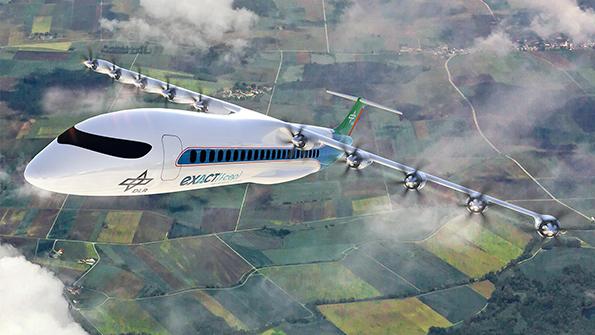Opinion: Could Propellers Help Solve The Sustainability Conundrum?

Decarbonization is one of the biggest trends in aviation. Yet there is no clear path forward beyond incremental improvements with today’s technologies, and we are nearing the limits of what can be achieved with thermal efficiency gains. Hydrogen, electric and hybrid propulsion, sustainable aviation fuel (SAF) and other emerging technologies offer varying degrees of promise but there are serious questions about their feasibility and cost-effectiveness. With SAF, scalability is a big challenge, too.
The global civil aviation industry has pledged to reach net-zero emissions by 2050. That will require billions of dollars to pursue uncertain solutions, with the strong risk of technological dead ends. But technologies from our industry’s past may offer paths forward, or at least a better balance of costs and risks. Aviation once embraced a more efficient form of propulsion—propellers—and considered embracing related very high-bypass propulsion concepts such as propfans and ducted propellers. Ultimately, turbofans swept them away.
Consider regional aircraft. For decades, most were turboprops. Between 1981 and 1990, 2,356 props were built and just 259 jets. Then regional jets arrived in force, and 1,105 of these were built between 1991 and 2000, along with 2,215 props.
But then all-jet fleets became a mantra for many regional operators. Between 2001 and 2020, 4,204 jets were built and just 1,716 props. Regional jets were seen as more productive, able to pursue traffic from markets close to competing airlines’ hubs and more appealing to passengers, although the last point is highly debatable, given the importance of ticket pricing to passengers.
All-jet fleets came at a price. Jets use considerably more fuel than props—a double-digit greater amount, per seat and per mile flown. But these all-jet decisions were largely made between 1997 and 2003, when oil prices were $18-36 per barrel, with no big upward spikes.
Fast-forward to 2022. The public is increasingly concerned about global warming. Air travel faces growing scrutiny as a source of greenhouse gas emissions. Oil is in the $85-100/barrel range. More is at stake than public opinion: Airlines are once again highly motivated to cut fuel consumption.
These trends led to the hype at this year’s Farnborough Airshow for expensive, niche technologies that will not pay dividends for most of the air transport system for decades, if ever. Meanwhile, as Bank of America points out in a recent report, in North America alone, almost 2,000 regional jets are more than 15 years old, as are hundreds more worldwide, so replacements are needed this decade.
Yet propellers—an off-the-shelf, zero-risk technology offering double-digit fuel savings—are receiving relatively little attention. The ATR family is the only prop in production. North America, the biggest regional market by far, remains mostly stuck on regional jets. Embraer’s new large turboprop, Deutsche Aircraft’s 328eco and a relaunch of the Dash 8Q (now owned by Viking) remain just proposals, garnering less attention (and less cash) than the latest hydrogen fuel system or electric vertical-takeoff-and-landing vehicles (although, ironically, almost every new advanced air mobility platform relies on props or blades).
This prioritization of new and speculative technologies over mature and proven ones echoes the argument made by David Edgerton in The Shock of the Old: Technology and Global History Since 1900. He makes a compelling case for replacing “innovation-centered futurism” with a “use-centered” view, pointing out that often technologies do not live up to their potential until decades after they are invented. Flamboyant, new technologies are often overrated as a consequence, while mature technologies are underrated.
Changing circumstances, such as fluctuating fuel prices or politics, account for part of the gap between invention and rediscovery. The fact that technology often matures at a slower pace than expected also plays a role. Geared turbofans offer an interesting example. The technology has been used on smaller engines for over 50 years, and a large commercial geared turbofan was initially proposed in the 1980s. Yet the first, Pratt & Whitney’s PurePower GTF, did not enter service until 2016.
Edgerton’s thesis is relevant for aviation beyond regional aircraft. Propfans, or other once-promising propulsion technologies such as ducted propellers, might finally be ready for use. Several propfans were flight-tested in the 1980s, but low fuel prices and technical challenges derailed the idea in the 1990s. CFM is aiming to revive the concept with its RISE program.
In short, the past might yield fuel-savings and emission-reducing solutions not just for regional transport, but for larger aircraft, too We just need to think beyond—or before—the latest shiny new things.



Comments